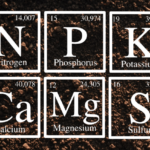We use cookies to make your experience better. To comply with the new e-Privacy directive, we need to ask for your consent to set the cookies. Learn more.
Elements for Plant Nutrition
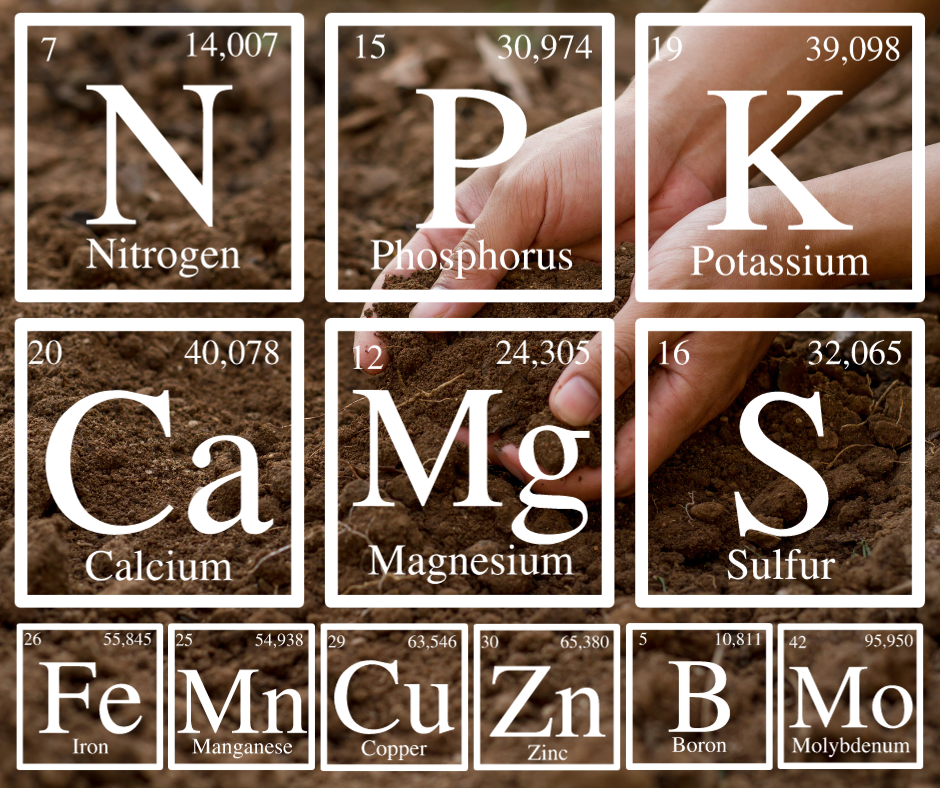
Elements for Plant Nutrition
A healthy fertile soil will hold the majority of nutrients plants need. In organic farming, the focus is on nourishing the soil, not just the plants. Crop rotation, green manures, composts and organic fertilisers play a vital role in sustainable agriculture, supplying plants with essential nutrients for optimal growth. Microbial activity in the soil gradually releases these nutrients, ensuring a balanced and continuous supply to the plants.
Look at any plant fertiliser package, even organic ones, and you'll see ratios related to NPK, but what is it? NPK stands for Nitrogen (N), Phosphorus (P), and Potassium (K), and these are the three nutrients that plants use the most to grow and thrive. Other very important nutrients are Calcium (Ca), Magnesium (Mg) and Sulphur (S). Plants also need a variety of trace elements; often very small amounts are sufficient, but nevertheless absolutely essential.
Below we explore the 12 key elements and their roles in plant development. Ideally in a fertile and healthy soil these elements are available to the plants, but over time amendments may be needed to correct imbalances and deficiencies.
Major Elements
Nitrogen (N)
Nitrogen is a primary constituent of amino acids, proteins, and chlorophyll, making it crucial for plant growth and it is often the limiting factor to crop growth on organic farms. If it is present vigorous vegetative growth and overall plant health is promoted, but plants deficient in Nitrogen are stunted, yellowish (especially the lower leaves), and have restricted root growth. Of all the soil minerals, Nitrogen fertilisation usually has the quickest and most pronounced increase in plant growth and yields.
Nitrogen is found only at low levels in soil because the soil parent materials normally contain little or no Nitrogen. In nature Nitrogen enters the soil system by biological activity; there are species of bacteria that are able to take up atmospheric Nitrogen (The atmosphere has roughly 80%N). Some of these bacteria are free living in the soil and others form symbiotic relations with plants, of which most are in the legume family.
This Nitrogen that has been fixed by these bacteria will become available to plants once these bacteria die and are decomposed by other bacteria which convert the Nitrogen to a soluble form that can be utilised by plants.
In organic farming and gardening the optimal nitrogen management is based on biological nitrogen fixation and minimising nitrogen losses from the system. Legume green manures in crop rotations incorporate the fixed nitrogen in their tissue and release it when they decompose to either be picked up by the next crop or held in the stable organic matter of the soil (humus).
For many crops Nitrogen will have to be added from other sources, one just has to be careful to apply the right amount in the right form, so that losses through leaching or volatilisation are minimised. Nitrogen in stable forms such as well made compost is less prone to these environmentally detrimental effects. Nitrogen from fresh chicken manure or raw slurry is easily lost.
Sources: Composted or fermented animal manures, plant based composts, and high protein plant and animal products like Alfalfa, Soy, hairmeal, blood meal, bone meal etc.
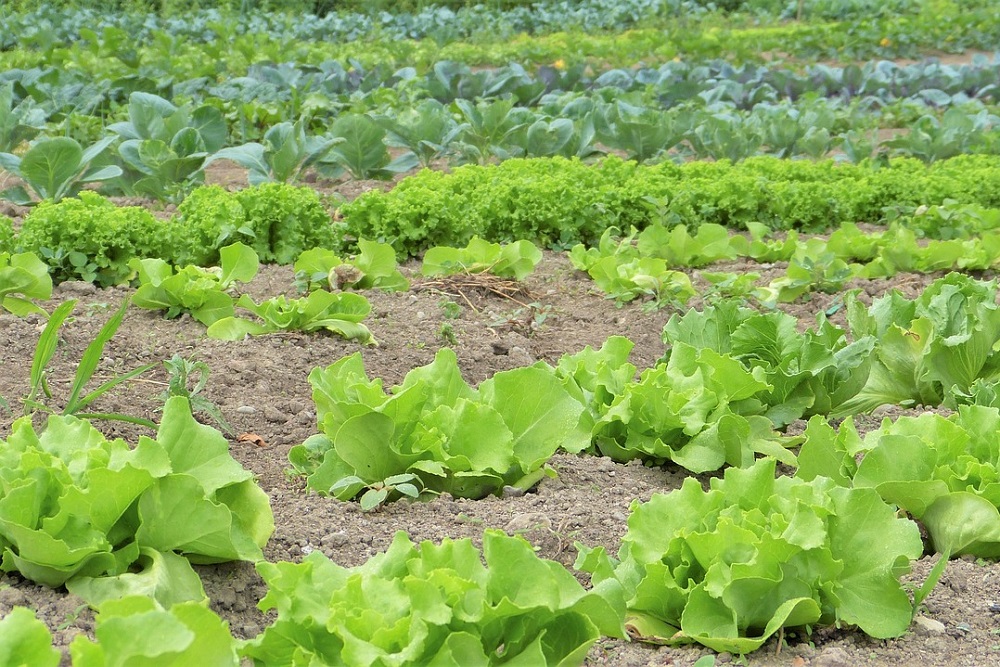
Phosphorus (P)
Phosphorus is vital for energy transfer, root development, and flower and fruit formation. Adequate phosphorus levels contribute to strong root systems and improved reproductive processes in plants. Phosphorus deficient crops can be stunted; leaves may turn purple; and flowering and new shoot growth will be delayed. Often, cold soils or a too low or too high pH for growth, limit phosphorus availability, even while the soil holds plenty of phosphorus.
The availability of P usually depends on whether your soil has enough, it cannot be fixed out of the air. It is important to take regular soil tests to monitor the level of P in the soil: too much P can be as bad as not enough. Don’t just add more every year.
Phosphorus is not very mobile in the soil, it is not soluble, so it should be well mixed in the soil and enough water should be available for the roots to be able to get near it and for the Mycorrhizae to be able to do their job. These mutualistic Mycorrhizae living in a biologically active soil invade plant roots and may use some carbohydrate produced by the plant, but also provide supplementary P (as well as other elements) to the plant.
Sources: Crop residue, livestock manures and composts recycle P and should meet most P needs. For soils low in P granulated soft rock phosphate (Dolophos) or bone meal can be used.
Potassium (K)
Potassium plays a key role in enzyme activation, photosynthesis, and osmoregulation. Potassium helps plants withstand environmental stress, enhance disease resistance, and regulate water uptake.
Potassium like Phosphorus has to be in the soil. The quantities and form in the soil depend on the nature of the parent material, the degree of weathering, and the soil management. It exists in the soil in various mineral forms and also in plant rests. Soil Potash levels can drop significantly if crops like silage, hay or straw are continuously taken off and no manures are brought back.
Sources: Farmyard manure, straw, woodash, PatentKali and Kalisop.
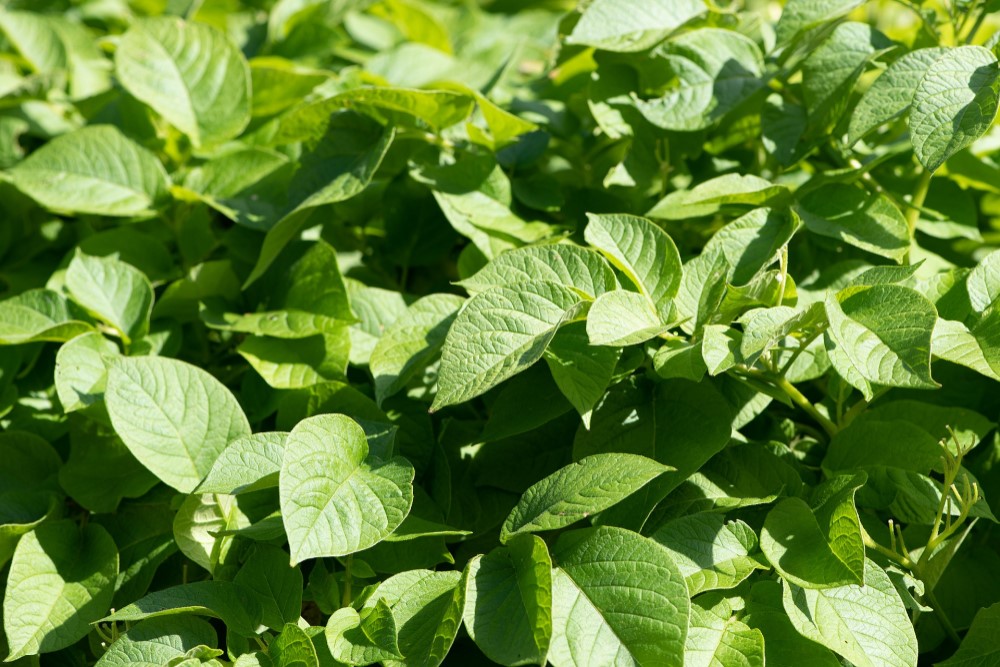
Calcium (Ca)
Calcium is essential for cell wall structure and stability, reducing the risk of diseases. Organic sources of calcium, such as lime or gypsum, contribute to overall plant structure and health.
Sources: Lime in various forms, chicken manure pellets, Gypsum, Liquid Calcium fertiliser.
Magnesium (Mg)
Magnesium is a central component of chlorophyll, the pigment responsible for photosynthesis. As such, it is indispensable for energy production in plants. A deficiency in magnesium manifests as yellowing between leaf veins, known as chlorosis.
Sources: PatentKali, Epsom salts, liquid magnesium.
Sulphur (S)
Sulphur is a component of amino acids and vitamins, contributing to plant metabolic processes. Sufficient levels improve Nitrogen efficacy and quality of crops. Sulphur helps protect plants against fungal diseases and pests, it can also be applied as a natural fungicide and pesticide.
Sources: Kalisop, PatentKali, Epsom salt, Gypsum, Elemental sulphur.
Trace Elements
Iron (Fe)
Iron is integral to the formation of chlorophyll, enabling plants to carry out photosynthesis effectively. Yellowing of leaves, a condition known as chlorosis, is a common symptom of iron deficiency. Ensuring an ample supply of iron is essential for vibrant green foliage and overall plant vigour.
Sources: Fish Blood and Bone, plant waste, healthy soil, Optiferrum (Liquid Iron fertiliser).
Manganese (Mn):
Manganese is an essential micronutrient involved in various metabolic processes within plants, including photosynthesis and nitrogen metabolism. It plays a pivotal role in enzyme activation and the reduction of nitrates. Manganese deficiency can lead to interveinal chlorosis, reduced growth, and impaired reproductive development.
Sources: Seaweed products, Chicken manure pellets, Fish blood and bone, Lebosol HeptaMangan (Liquid Manganese fertiliser).
Zinc (Zn)
Zinc is an essential micronutrient crucial for enzyme activation, DNA synthesis, and hormone regulation in plants. It is particularly vital during the early stages of plant development. Zinc deficiency can lead to stunted growth, distorted leaves, and impaired flowering, underscoring the importance of maintaining adequate levels of this micronutrient.
Sources: Wormcasts (Humisol liquid feed), Seaweed products, Chicken Manure pellets, Liquid Zinc Fertiliser, Fish Blood and Bone.
Copper (Cu)
Copper is a micronutrient with diverse functions, including enzyme activation and the formation of lignin, a crucial component of cell walls. A deficiency in copper may result in wilting, necrosis, and reduced plant growth. Including copper in organic fertilisers contributes to maintaining the structural integrity of plants and facilitating metabolic processes.
Sources: Wormcasts (Humisol liquid feed), Seaweed products, Chicken Manure pellets, Liquid Copper Fertiliser, Fish Blood and Bone.
Boron (B)
Boron, though required in minimal quantities, plays a critical role in various physiological processes for plants. It aids in cell division, carbohydrate metabolism, and the synthesis of nucleic acids. Boron deficiency can lead to stunted growth, poor flower development, and reduced fruit set. Root crops with boron deficiency are often misshapen and develop a hollow core.
Sources: Wormcasts (Humisol liquid feed), Seaweed products, Chicken Manure pellets, Liquid Boron Fertiliser, Fish Blood and Bone.
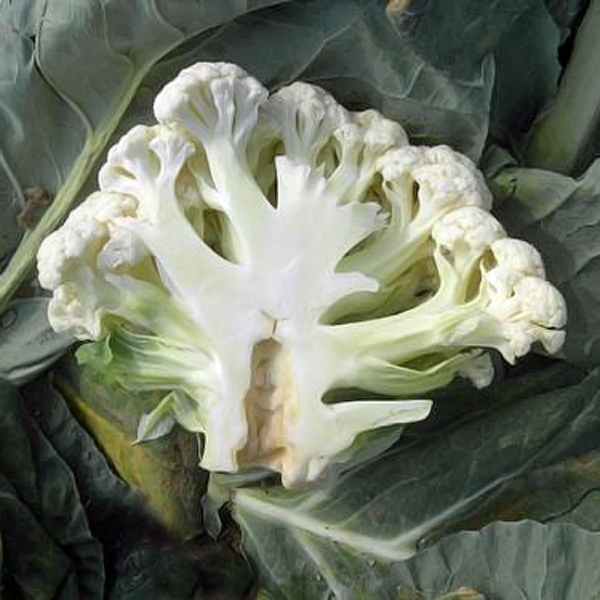
Molybdenum (Mo)
Molybdenum is a trace element critical for nitrogen metabolism in plants, particularly in the conversion of nitrate to ammonia. It is essential for the synthesis of amino acids and the functioning of enzymes involved in nitrogen fixation.
Although plants typically require only small amounts of molybdenum, its deficiency can lead to symptoms such as yellowing and impaired growth. Liming acid soils can help make Molybdenum more available to plants. Including molybdenum in organic fertilisers ensures the facilitation of vital biochemical processes, contributing to the overall nutritional well-being of plants.
Sources: Liquid Molybdenum Fertiliser, Fish Blood and Bone.
We recommend soil tests to determine which nutrients your soil may be missing.
Understanding the elemental composition of organic manures, composts and fertilisers is pivotal for effective and sustainable agriculture. Balancing these elements ensures that plants receive a comprehensive range of nutrients, promoting their resilience, growth, and productivity. As you select and apply organic fertilisers, consider the specific nutrient requirements of your plants to achieve optimal results in a natural and eco-friendly manner.


